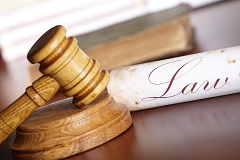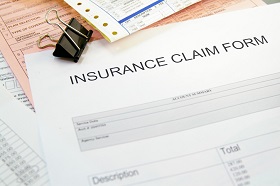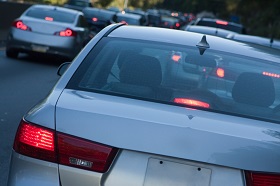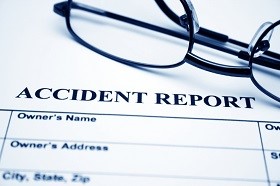The Seattle Personal Injury Blog
Posted Tuesday, October 22, 2013 by
Chris Thayer
 Attorneys are not always just attorneys. In fact, for a Seattle car accident lawyer, being an effective salesman is an important part of his job. Below are a few assets you should look for before hiring an attorney.
Attorneys are not always just attorneys. In fact, for a Seattle car accident lawyer, being an effective salesman is an important part of his job. Below are a few assets you should look for before hiring an attorney.
He Knows What It Takes to Get the Job DoneThe right Seattle car accident lawyer will know how to put together the relevant information about your claim in a way that makes settlement in your favor attractive to the insurance carrier. This is the salesman in your attorney. He will present your pain and suffering, lost wages, and medical costs in a way that best represents your appropriate damages from the insurance company.
He Treats the Claims Adjuster Like an EqualYou will want a Seattle car accident lawyer who is respectful to the other professionals he must interact with to reach a settlement agreement. Thus, the way he addresses the claims adjuster could have a big impact on how easily your claim is settled for a reasonable value. In essence, this is a reflection of the validity of the old adage that you can attract more bees with honey than with vinegar.
He Practices Open Communication with the AdjusterYour Seattle car accident lawyer should be free with information as your claim proceeds. If there are documents the claims adjuster is missing, a good Seattle car accident attorney will be sure a copy is sent to him.
He Is KnowledgeableThe knowledge and experience of your Seattle car accident lawyer will be invaluable to the success of your claim. This goes hand in hand with the traits mentioned above, as the knowledge your Seattle car accident attorney has about personal injury claims will directly inform what documents are needed by the adjuster.
Finding the Right AttorneyIf you have been injured in an accident that was caused by another’s negligence, you may be asking how you go about finding a Seattle car accident attorney that fits all of these attributes laid out above. Your first step is to call (206) 340-2008 for more information about representation from Chris Thayer, an experienced attorney eager to help with your claim.
Permalink to this entry
Posted Friday, October 18, 2013 by
Chris Thayer
What’s the amount of compensation you can expect from winning a dog bite verdict? The answer is based on several different factors, which a Seattle personal injury attorney can discuss with you in an initial consultation.
Permalink to this entry
Posted Thursday, October 10, 2013 by
Chris Thayer
 When dealing with an adjuster for your injury claim, a personal injury lawyer in Seattle, WA can spot unscrupulous tactics used to prolong your claim. Adjusters often engage in common stonewalling tricks. Some tricks may even be against the law. Be on the lookout for the following.
When dealing with an adjuster for your injury claim, a personal injury lawyer in Seattle, WA can spot unscrupulous tactics used to prolong your claim. Adjusters often engage in common stonewalling tricks. Some tricks may even be against the law. Be on the lookout for the following.
False DenialsOne of the most egregious tactics used is a false or misleading denial of your claim. Sometimes an adjuster may say that you don’t have a claim, when in truth he knows you do. Tell your personal injury lawyer in Seattle, WA if an adjuster tries to verbally intimidate you into withdrawing your claim. This improper behavior should be reported to the adjuster’s supervisor at once.
ArbitrationIf an adjuster attempts to force you into arbitrating your claims out of court, this can delay the process. A personal injury attorney in Seattle, WA can advise you whether you must submit to arbitration. If so, your personal injury attorney in Seattle, WA may be able to represent you in it.
Waiting Out Your Statute of LimitationsAn adjuster knows full well the legal deadline for filing your claim. As your personal injury lawyer in Seattle, WA will explain, if you fail to file a lawsuit within that deadline, you may lose the chance to ever pursue your claim. Most state regulations prohibit this kind of tactic and require the adjuster to inform you of the appropriate statute of limitations. A personal injury lawyer in Seattle, WA can fully advise you of your legal rights.
Claimant ContributionAn adjuster may tell you no benefits can be paid unless you contribute costs as well. A personal injury lawyer in Seattle, WA can review your case and explain what, if any, contribution is required.
For Assistance from Knowledgeable Legal CounselIf you have been injured due to another’s negligence, you have rights. A skilled personal injury lawyer in Seattle, WA can help you recognize and avoid unscrupulous adjusters and improper delay tactics. Call Chris Thayer today for legal help at (206) 340-2008.
Permalink to this entry
Posted Thursday, October 3, 2013 by
Chris Thayer
 The insurance adjuster handling your claim will likely employ tactics to minimize the value of your claim. Your auto accident attorney in Seattle will be prepared for these tactics and will know how to move forward in spite of them.
The insurance adjuster handling your claim will likely employ tactics to minimize the value of your claim. Your auto accident attorney in Seattle will be prepared for these tactics and will know how to move forward in spite of them.
Tactics Used by Adjusters
Using Deceitful AuthorityYour auto accident lawyer in Seattle is familiar with adjusters needing authority before moving forward with a settlement agreement. Some adjusters, though, will create false authority stating they are only free to settle for a minimal and unfair amount. Another authority that can be deceitful is the use of depreciation tables that, in reality, are hardly related to the actual value of your claim.
Refusing a Salvage AgreementYour auto accident lawyer in Seattle will tell you to be prepared for the insurance adjuster to refuse to accept your vehicle for salvage. In this case, you will not be paid the salvage value for your car and will be responsible for disposing of the vehicle yourself.
Failing to PayExpenses will arise throughout the course of your claim that your auto accident attorney in Seattle will attempt to have paid for by the insurance company. Many claims representatives, though, will refuse to do so in situations that they believe an alternative exists. This may come up if you need a rental car and, rather than paying this cost, the adjuster insists you find someone else to drive you around. Similar instances may arise when payment for lost wages or medical bills are requested.
Valuing Your TimeYour auto accident attorney in Seattle will warn you that the insurance company may minimize settlement by assessing the value of your time. Claims representatives know that claimants who are employed as doctors or lawyers, or are self-employed are unable to take the excessive amount of time off that would be required for trial. Your auto accident attorney in Seattle will tell you to be prepared if you are in a profession of this sort, as the adjuster will likely try to take advantage of your desire to avoid litigation by offering a low settlement amount.
Success with the Help of Your Auto Accident Attorney in SeattleClaims representatives know that most claimants are not experienced in personal injury claims and are easier to take advantage of if they are not represented by an auto accident attorney in Seattle. You can help improve your chances of success by hiring an auto accident lawyer in Seattle like Chris Thayer. Call (206) 340-2008 today for more information.
Permalink to this entry
Posted Thursday, September 26, 2013 by
Chris Thayer
 It is important to know how insurers negotiate personal injury claims. They are experts at getting claimants to accept a low settlement. However, strong Seattle personal injury attorneys also know how to negotiate, and can fight for your rights.
It is important to know how insurers negotiate personal injury claims. They are experts at getting claimants to accept a low settlement. However, strong Seattle personal injury attorneys also know how to negotiate, and can fight for your rights.
Seattle Personal Injury Attorneys: Insurers May Attack Your IntegrityPracticed Seattle personal injury attorneys know that insurers may attack the integrity of statements you made to them. One way that your Seattle personal injury lawyers can combat this is by telling the adjuster that such statements would never be used against you at trial anyway. Another way to do this is to refer the adjustor to any parts of the statement that would be unfavorable to them at trial. Finally, it can be pointed out to the insurer precisely why parts of the statement are not as they should be.
Seattle Personal Injury Attorneys Know When Insurers Claim Statements Are WeakInsurers often try to negotiate with Seattle personal injury attorneys by claiming that client statements are weak. Your lawyers can re-orient them towards things like exactly when the statement was made, as well as if you had any symptoms at that time.
Seattle Personal Injury Attorneys for Depositions and InterrogationsIf insurers give you a hard time during depositions and interrogations, your attorneys can object to questions about your statement. Your attorneys may even tell you not to reply to certain questions that insurers ask about the statement (unless told otherwise by a judge). Typically, plaintiffs must address questions about statements they have signed, but sometimes these statements and their accompanying questions are deemed inadmissible in court.
What your Seattle personal injury lawyers may do is object on the grounds that if your right to representation was not respected, you may not have been told that giving a statement could be used against you. In addition, the statement may not have been given while you were under oath. As such, your attorney may also ask to cross examine any individuals who took down the statement.
Seattle Personal Injury Attorneys for Tough NegotiationsWhen you need experienced Seattle personal injury lawyers who know how to negotiate, call Chris Thayer at (206) 340-2008.
Permalink to this entry
 Attorneys are not always just attorneys. In fact, for a Seattle car accident lawyer, being an effective salesman is an important part of his job. Below are a few assets you should look for before hiring an attorney.
Attorneys are not always just attorneys. In fact, for a Seattle car accident lawyer, being an effective salesman is an important part of his job. Below are a few assets you should look for before hiring an attorney.

 When dealing with an adjuster for your injury claim, a personal injury lawyer in Seattle, WA can spot unscrupulous tactics used to prolong your claim. Adjusters often engage in common stonewalling tricks. Some tricks may even be against the law. Be on the lookout for the following.
When dealing with an adjuster for your injury claim, a personal injury lawyer in Seattle, WA can spot unscrupulous tactics used to prolong your claim. Adjusters often engage in common stonewalling tricks. Some tricks may even be against the law. Be on the lookout for the following. The insurance adjuster handling your claim will likely employ tactics to minimize the value of your claim. Your auto accident attorney in Seattle will be prepared for these tactics and will know how to move forward in spite of them.
The insurance adjuster handling your claim will likely employ tactics to minimize the value of your claim. Your auto accident attorney in Seattle will be prepared for these tactics and will know how to move forward in spite of them. It is important to know how insurers negotiate personal injury claims. They are experts at getting claimants to accept a low settlement. However, strong Seattle personal injury attorneys also know how to negotiate, and can fight for your rights.
It is important to know how insurers negotiate personal injury claims. They are experts at getting claimants to accept a low settlement. However, strong Seattle personal injury attorneys also know how to negotiate, and can fight for your rights.